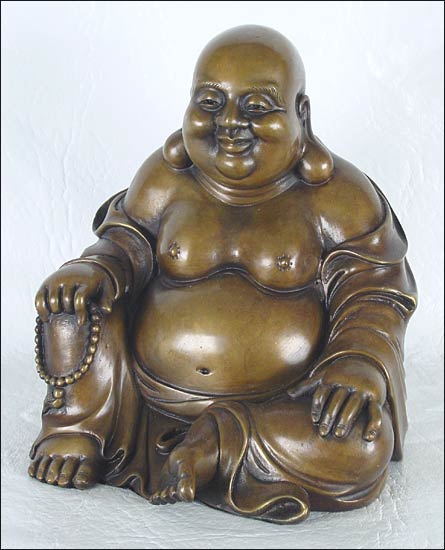If you go to India one day, it may surprise you to see that many sadhus and yogis are noticeably pot-bellied although they eat hardly anything. And you will probably have noticed that almost all the statues of Buddha or other sages portray them with a generous paunch. The reason for this is that, in an initiate, a well-rounded paunch is a sign of power and strength, an indication of the spiritual reserves he has accumulated thanks to years of special breathing exercises.
Look at the Japanese: some of them have enormous paunches and yet are very supple and strong and very intelligent. The explanation is that they develop what they call the Hara centre. This is the centre situated just four centimetres below the navel. In Japanese, hara means belly.
According to Japanese sages, the Hara is human’s life-centre, their centre of gravity, the universal centre; and when one concentrates on it and develops it to the full, one becomes tireless and invincible. The most striking characteristic in those who have worked to develop their Hara centre is that they are extraordinarily well balanced.
A great many of the problems characteristic of our times come, as I have already told you, from the fact that people in the West have upset the balance of their lives. They are no longer centred as they should be in their centre of gravity, their life-centre. Instead, the brain – which by rights is on the periphery of man – has usurped the central position. Too much thought, too many cares, too much cerebral activity have unbalanced humans.
Of course, for Westerners, there is the problem that for a long time the force-centres situated lower down in the physical body were considered unworthy to have any part in the spiritual life.
The Hara centre is mentioned in many esoteric books, but often in very different ways. In fact some passages from ancient Christian authors show that they knew of this centre. In his book, ‘The Twelve Keys,’ the famous alchemist, Basil Valentine, encourages adepts to descend into the earth’s centre to seek the Philosopher’s Stone. He says: Visita interiora terrae; rectificando invenies occultum lapidem, veram medicinam, which means: ‘Visit the bowels of the earth; if you rectify (purify by distillation) you will find the hidden stone, the true medicine.’
Omraam Mikhael Aivanhov
Izvor 219, Man’s subtle Bodies and Centres, Chapter 4



Leave A Comment